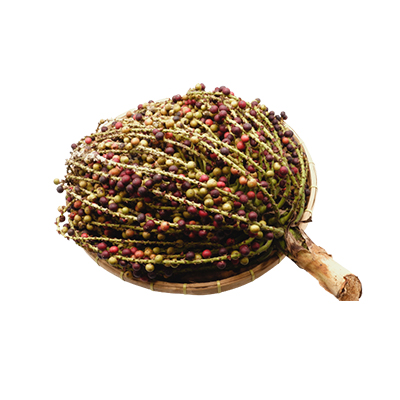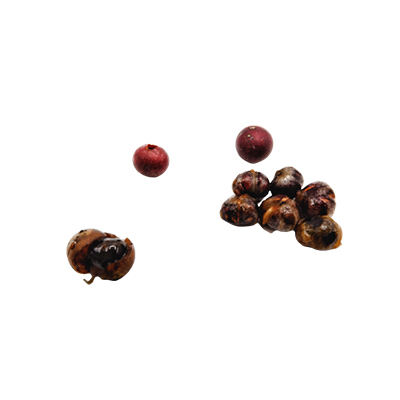Fishtail Palm
Caryota mitis Lour.
Arecaceae
Location in our garden
Palm
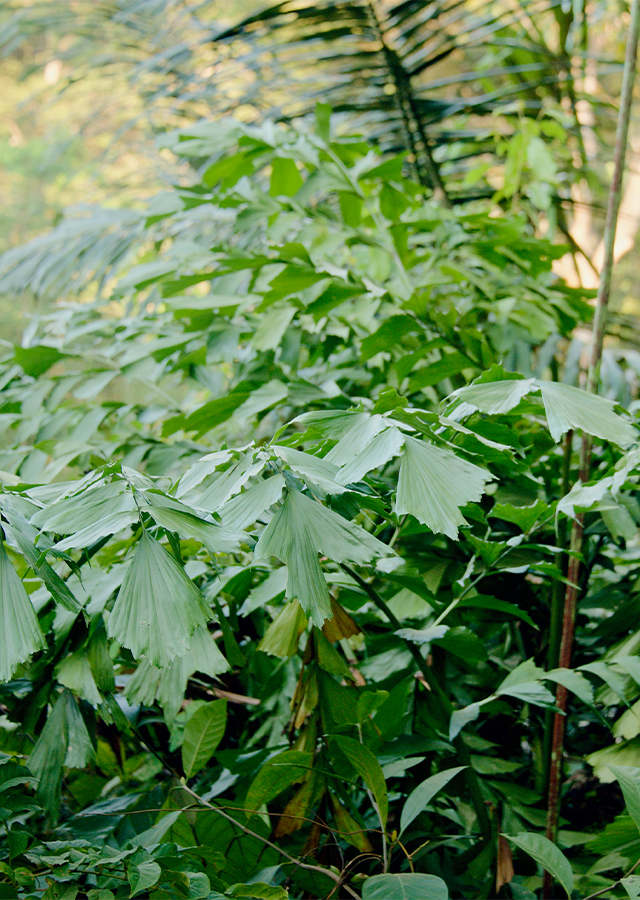
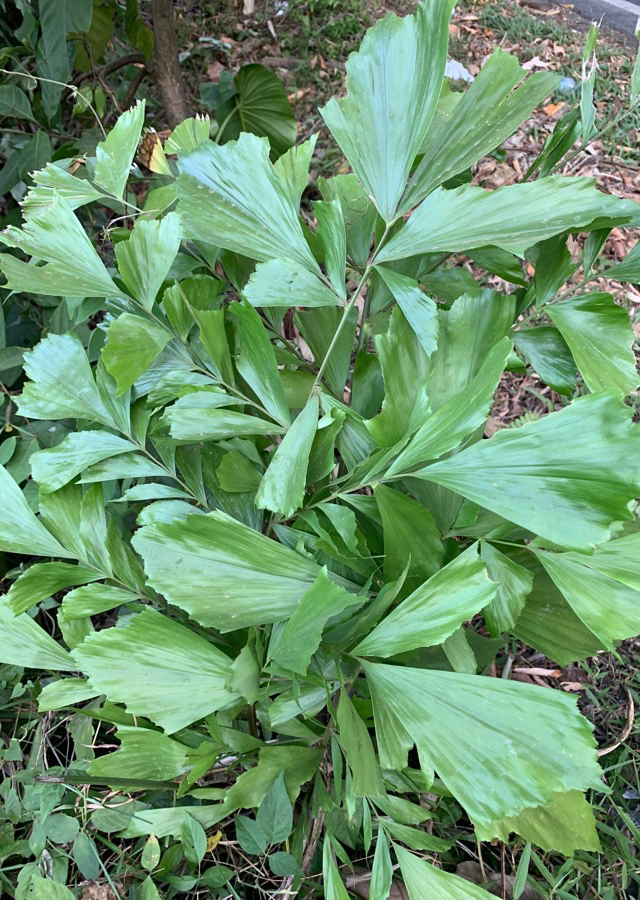
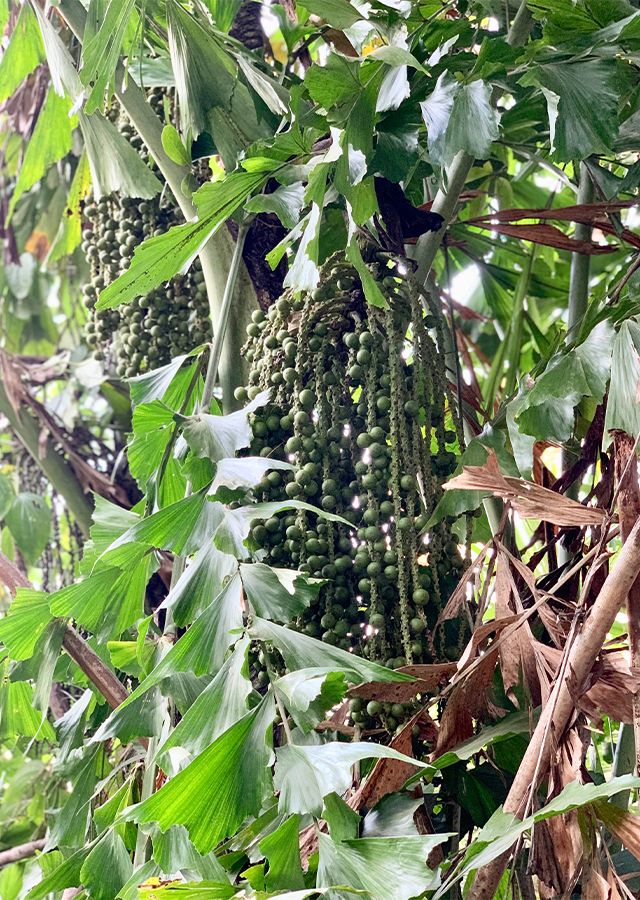
Synonym
Caryota furfuracea Blume
Caryota griffithii Becc.
Caryota javanica Zipp.ex Miq.
Habitus
Palm. A multi-stemmed, clustering, evergreen palm tree growing around 8 m tall and 4 m across at the top.
Part Used
Leaves
Seeds
Fruit
Sap
Stem
Growing Requirements
Full Sunshine
Habitat
Forest
Overview
Fishtail palm is a member of the Arecaceae family. It derives its name from the shape of its leaves. It is native to Southeast Asia, Sri Lanka, and India. but introduced to many other tropical countries. They are also one of the few Arecaceae with bipinnate foliage. Many grow in mountainous areas and are adapted to warm mediterranean climates as well as subtropical and tropical climates.
Vernacular Names
Taou Rung Dang (Thailand), Bato (Tagalog-Philippines), Minbow (Myanmar), Dung dinh (Vietnamese), Duan sui yu wei kui (Chinese), Nudok (Malaysia).
Agroecology
Fishtail palms can adapted in light conditions from full sun to deep shade, requires only well-drained and moderately fertile soil. This palm has a moderate to fast growth rate and should be placed outdoors in a sheltered location protected from the cold. The species in this genus are monocarpic, growing for several years (in some species 15 years or more) without flowering, but then flowering and fruiting profusely over several years before dying.
Morphology
- Roots - fibrous, shallow rooted.
- Stem - clustering, upright, to 7-10 m tall and 12- 15 cm in diameter, ringed with slender, widely-spaced leaf scars
- Leaves - bippinnate, 5-12 per stem, petiole up to 3 m long, the leaflets are numerous obliguely wedge shaped, 10-20 cm long.
- Flowers - small, bisexual with separate male and female flowers, purplish to maroon.
- Fruits - diameter 1-2 cm, has one seedglobuse, reddish to dark purple when ripe
- Seeds - brown, flat surface, hard consistency.
Cultivation
- Propagated by seed - usually takes 3-4 months to germinate.
- Fishtail palm can also be propagated by division of clumps and separation of suckers from the parent clump.
Chemical Constituents
- Kaempferol and chlorogenic acid methyl ester, β-amyrin, β-sitosterol, glucoside, kaempferol, quercetin, glucopyranoside, glucopyranoside.
- Fruit, leaves and stems contain various alkaloids.
Traditional Medicinal Uses
- Medicinally, the roots and fruits for treatment of constipation, hemorrhoids, loss of virility, and rheumatoid arthritis
- Recombinant Cryota mitis profilin (rCmP)-loaded PLGA nanoparticles revealed them to be very efficient in the treatment of allergic asthma
- the fibers are used to treat poisonous animal bites and insect stings.
- It suggested a potential for development of natural antioxidants.
- The alkaloid fractions showed antibacterial and antifungal activities against selected strains i.e., E. coli, S. aureus, and C. albicans.
- Seed flour is made into porridge which can then be used to treat gastric ulcers, severe headaches, poisoning by snakebites, and rheumatic swelling.
- The root is used against tooth discomforts and the bark and seeds against boils.
- In Cambodia, soft fibers at the base of the leaf-sheath use for the cauterization of wounds.
- In Thailand, for itches, the fruits are boiled in water and the water used for a bath.
- Negrito tribes of Andaman Islands use the young shoots for vomiting and stomachache.
- In Bangladesh, roots and fruits used for hemorrhoids, loss of virility, rheumatoid arthritis, and as laxative.
Part Used
Reference Sources
Gilman, E.F. and D.G. Watson, 1993. Caryota spp. Fishtail palm. Fact Sheet ST-124, November 1993, pp: 1-3. http://hort.ufl. edu/database/documents/pdf/tree_fact_ sheets/carsppa.pdf
Hodel, P. R. & P. Vatcharakom, 1998. The palms of Thailand. In: Hodel, D. R. (ed.), The Palms and Cycads of Thailand. Kampon Tanasacha, Nong Nooch Tropical Garden, Thailand. Pp. 1–177.
Mollik M.A.H, A. Hassan, T.K. Paul, M. Sintaha,H.N. Khaleque,F.A. Noor, A. Nahar, S. Seraj, R. Jahan, M.H. Chowdhury and M. Rahmatullah. 2010. A survey of medicinal plant usage by folk medicinal practitioners in two villages by the Rupsha River
in Bagerhat District, Bangladesh. Am-Eur. J. Sustain. Agric. 4(3): 349-356.
Saw, L.G., 1998. Caryota mitis Lour.. In: Sosef, M.S.M., Hong, L.T. and Prawirohatmodjo, S. (Editors): Plant Resources of South-East Asia No 5(3): Timber trees; Lesser-known timbers. PROSEA Foundation, Bogor, Indonesia. Database record: prota4u.org/prosea
Xiao, X., X. Zeng, X. Zhang, L. Ma and X. Liu et al ., 2013. Effects of Caryota mitis profilin-loaded PLGA nanoparticles in a murine model of allergic asthma. Int. J. Nanomed., 8: 4553-4562.



